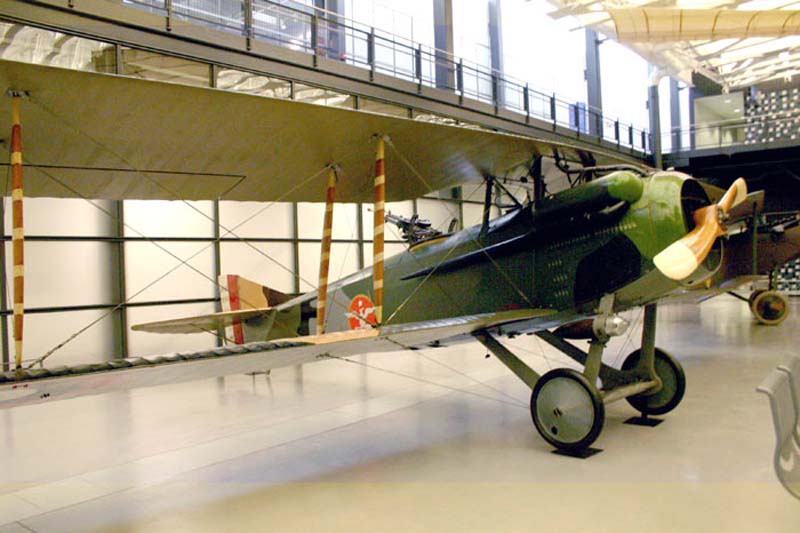| Spad | ||||||||||||
|
XVI # |
||||||||||||
 |
||||||||||||
|
Photo: Robert Deering 10/23/2006 Smithsonian National Air and Space Museum Dulles International Airport (IAD) Chantilly, Virginia |
||||||||||||
|
The Spad
XVI was a two-seat version of the very successful
single-seat Spad fighters of World War I, the Spad VII and
the Spad XIII. The first Spad two-seater design to see
front-line service was the Spad XI. The Spad XVI was an
attempt to improve upon it by replacing the Spad XI's
220-horsepower Hispano-Suiza engine with a 240-horsepower
Lorraine-Dietrich 8Bb. The Spad XVI appeared in January
1918. It was slightly faster than the Spad XI, but had a
lower ceiling and the same poor handling qualities. It
offered no overall improvement. Nevertheless, approximately
1,000 Spad XVIs were built, ultimately equipping 32 French
escadrilles. An otherwise undistinguished aircraft, the Spad XVI in the NASM collection is significant because of its association with Brigadier General William "Billy" Mitchell. He piloted this Spad XVI on many observation flights over the front lines during pivotal battles in the last months of the war. |
||||||||||||
|
||||||||||||
